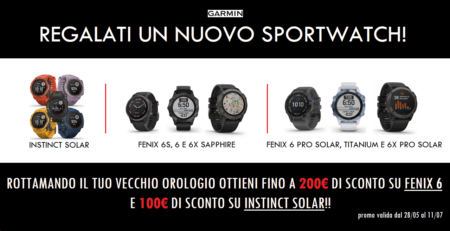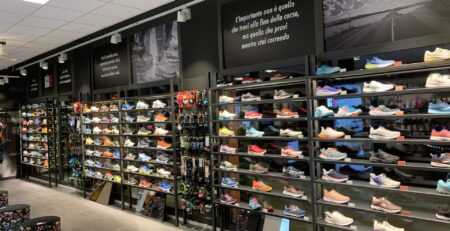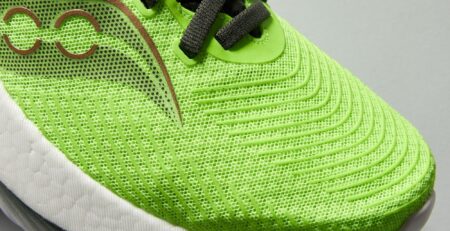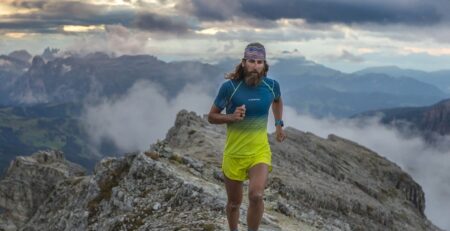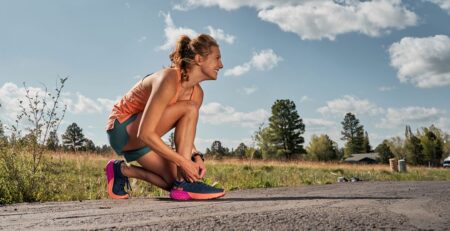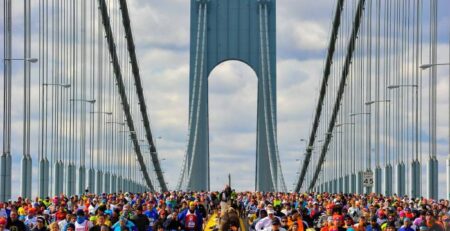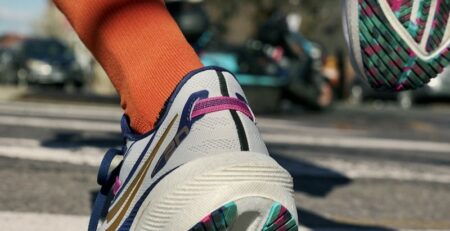Here we are faced with one of the thorniest questions concerning our favourite training companions!
‘How long do running shoes last?’.
The answer in this case, however, is one of the most articulate that can be given and can be summed up in the dreaded ‘it depends’.
What does it depend on?

On multiple factors: our weight and height, for example. From our running pace. But also by the structure of the shoes themselves, the terrain on which they are used, how much and how they are used and, last but not least, their maintenance.
For convenience, we will make the followinganalysis with reference to a person of normal build (175 cm 70 kg man, 165 cm 60 kg woman).
How long does a well-cushioned shoe last?
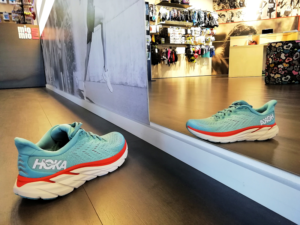
These include, for example, Brooks Glycerin 19, Saucony Triumph 19, Hoka Clifton 8 (review here!) and many others. Well, in this case, the average duration is around 800 km. Logically, there can also be considerable variations and the degradation factor due to time must be carefully considered. Generally speaking, in fact, after a year of use (but also of non-use), there is a natural decay in the softness and elasticity of the midsole compound, resulting in more accelerated wear.
How long does a cushioned anti-pronation shoe last?
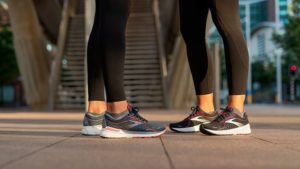
They include, for example, Brooks Adrenaline GTS 21, Saucony Guide 14, Hoka Arahi 5 and many others.
In this case, the average durability does not deviate much from the neutral support shoes. Although, being equipped with a more protective structure, they may last a few kilometres longer than the canonical 800 km.
How long does an intermediate shoe last?
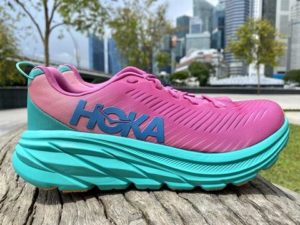
This category includes, for example, Saucony Kinvara 12, Brooks Launch 8, Hoka Rincon 3 and many others.
As this type of shoe is lighter and less structured than the super-cushioning ones, and is dedicated to more intense activities, we can expect an average life of around 600 km. It goes without saying that in the presence of decidedly lighter models (such as Hoka’s), the durability may shorten.
How long does a superlight shoe last?
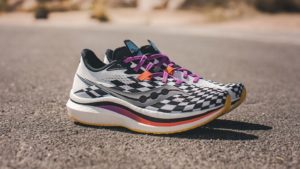
Among the super-lightweight shoes, we find all the highest-performance shoes, even those with carbon fibre lamina: Hoka Rocket X, Saucony Endorphin Pro 2, Brooks Hyperion Elite 2, to name but a few.
Difficult, in this case, to exceed 400 km with agility. They are shoes dedicated almost exclusively to races or faster training, which is why, if used with criterion, they can give us good satisfaction. So don’t use them for slow terrain or to show them off in the city centre!
How long does a trail shoe last?
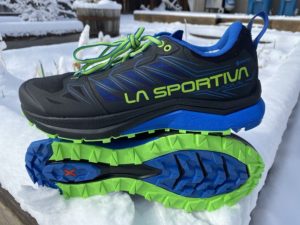
Just to name a few, Saucony Peregrine 11, Brooks Cascadia 16, Hoka Speedgoat 4 and La Sportiva Jackal.
The durability of a trail shoe is certainly the most variable value. It depends on the technicality of the sole, the softness of the latter, the type of trails practised and the stability sought. We can however estimate between 400 and 700 km.
How to know when it is time to change them?
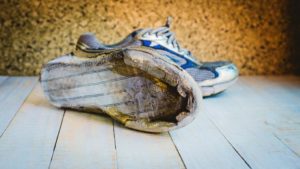
Paradoxically, except in the case of trail shoes, it is not only the wear of the sole that is decisive.
It can happen, in fact, that the tread is smooth (or at least worn) and yet the shoes are still able to offer a few hundred kilometres of performance, softness and responsiveness. Shoes must absolutely be changed when their elasticity, energy return and cushioning is lacking. When, as they say in the jargon, they tend to ‘sit’ and feel slower and stiffer. So let’s run for cover before we experience discomfort and/or pain.
How to make them live longer?
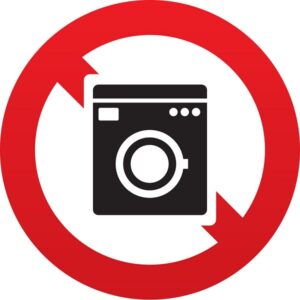
The first piece of advice is certainly that, if possible, DO NOT WASH THEM! Neither by hand, nor in the washing machine! Rubber and uppers harden, lose elasticity and wear out much sooner. Even when they start to get dirty, try not to overdo the cleaning: NO WASHING MACHINE (we like to repeat ourselves!), no detergents or soaps, just a slightly damp cloth and leave them to dry away from radiators, heat sources or sunlight.
Another good tip is not to distort their nature: avoid, for example, wearing super-lightweight shoes on dirt roads and, vice versa, wearing trail shoes on asphalt.
It is good practice, then, to choose appropriate shoes in relation to one’s physical structure: for heavier runners, we advise against opting for an excessively light and/or poorly structured shoe.
Finally, we recommend, if possible, using at least two different pairs of shoes so as to alternate them, depending on the type of training you intend to do: this not only helps to lengthen the average life of both shoes, but also to always have the right shoe for each training session or race.
In any case, we always try to rely on specialised shops that can offer a service that meets our expectations. They will then be able to give us a reliable duration forecast, calculated on the basis of our build and our type of support.
Now that we finally know a bit more, it’s time to get back to training: good runs and good training or races to everyone!
And good shopping at MioMio Run!





